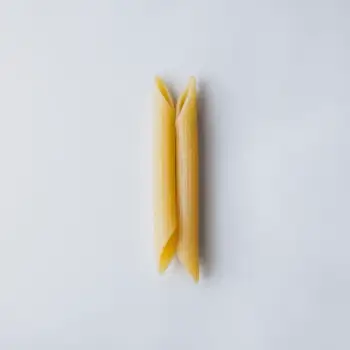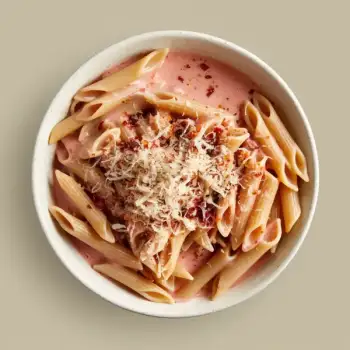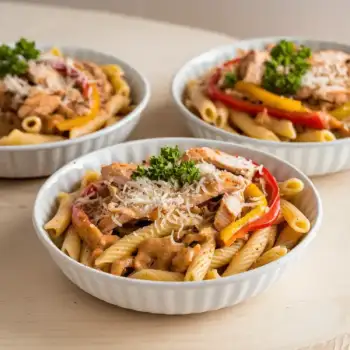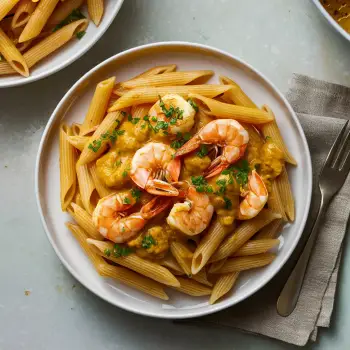


Dried
Penne pasta typically comes in a dried form, made from durum wheat semolina. It is a staple in Italian cuisine and has a firm texture when cooked al dente.
Fresh
Fresh penne pasta can be found in some specialty stores or made at home. It cooks faster and has a tender texture compared to dried penne.
Gluten-Free
Gluten-free penne is made from alternative grains such as rice, corn, or quinoa, catering to those with gluten sensitivities or celiac disease.
Whole Wheat
Whole wheat penne offers a healthier alternative with more fiber and nutrients. It has a nuttier flavor and a denser texture compared to traditional penne.




dried penne: De Cecco or Barilla
fresh penne: Not commonly branded, often found in specialty or local Italian markets
gluten-free penne: Barilla Gluten Free or Tinkyada
whole wheat penne: Whole Foods 365 or Barilla Whole Grain

Baking: Penne can also be baked, often in dishes like casseroles or 'pasta al forno.' After boiling, mix it with sauce and other ingredients, top with cheese, and bake until bubbly and golden on top.
Boiling: The standard method for cooking penne is to boil it in a large pot of salted water. Use about 4-6 quarts of water per pound of pasta and add salt to taste (usually about 1-2 tablespoons). Bring the water to a rolling boil before adding the penne.
Skillet Cooking: For a one-pan meal, penne can be cooked directly in a skillet with sauce and other ingredients. This method allows the pasta to absorb the flavors of the sauce and usually requires less water than boiling.












